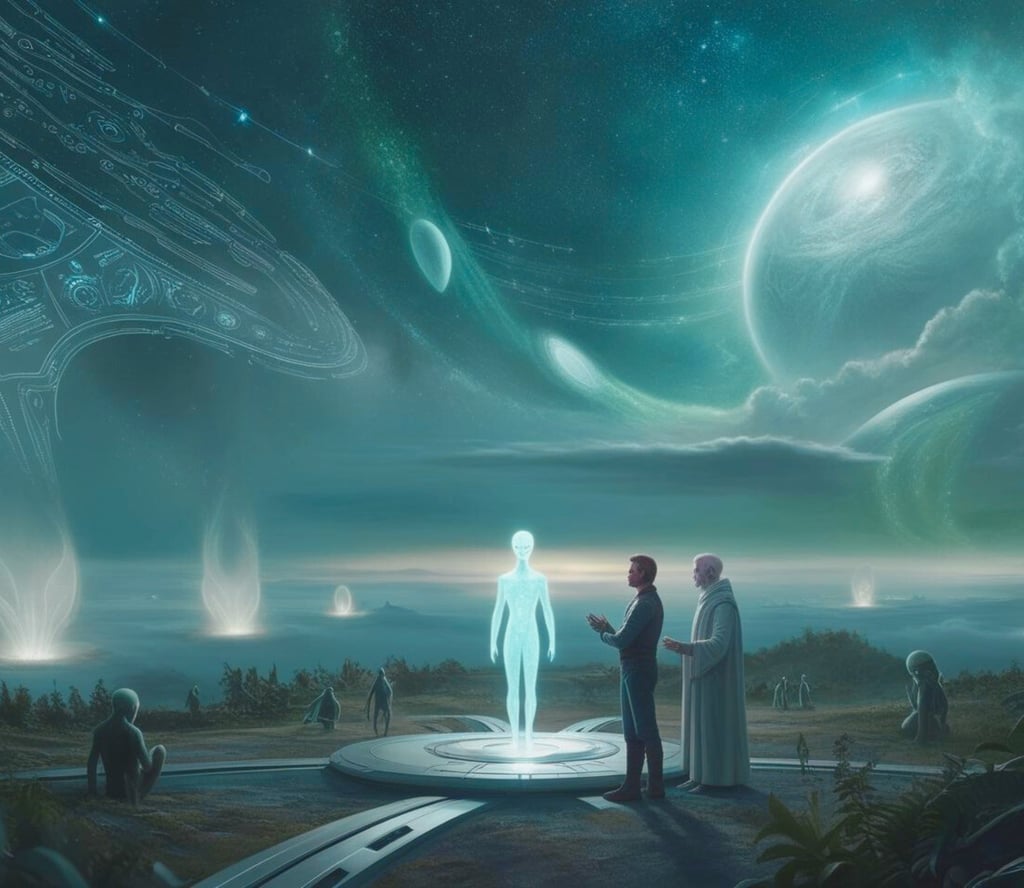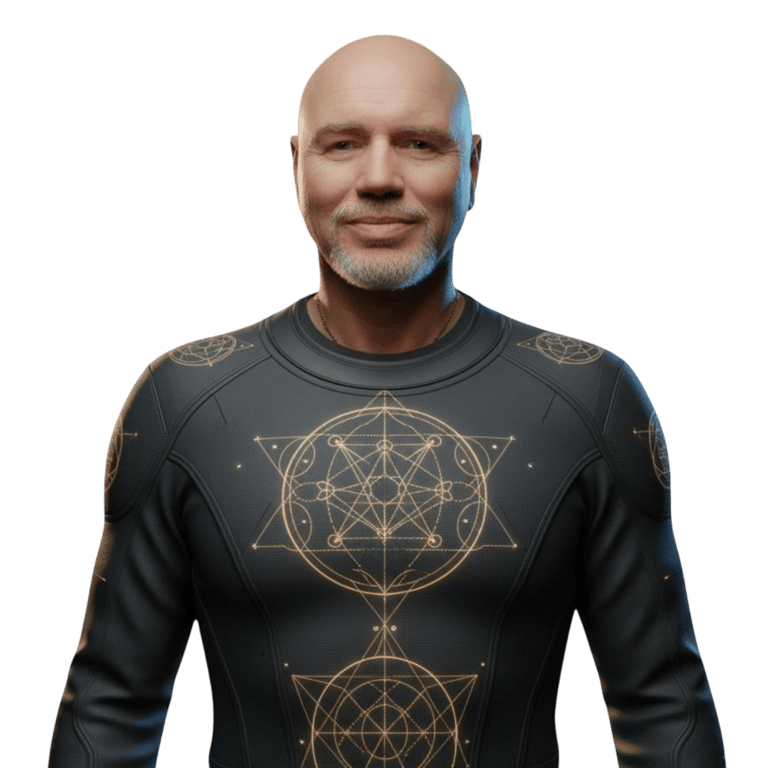Humanity’s Critical Questions About Non-Human Intelligence
For decades, humanity has looked to the stars, wondering if we are alone. Recent discussions surrounding Unidentified Aerial Phenomena (UAPs) and non-human intelligence (NHI) have cast this age-old question into sharper focus, forcing us to grapple with the implications of discovering advanced civilizations. What would such a realisation mean for us? What questions should we be asking, and where might those answers lead? As the possibility of encountering or understanding such intelligence becomes more mainstream, it is imperative to consider the possibilities and their potential outcomes.
UAP/UFO/USOSPIRITUAL AWARENESS
Nigel John Farmer
1/3/20254 min read


The Critical Questions Humanity Must Ask
1. What Are These Entities and Where Do They Come From?
When we discuss potential alien life forms, most of us think of extraterrestrials—beings from distant planets orbiting stars far away. However, what if their origin is closer to home? Could they be interdimensional beings, inhabiting realms parallel to ours? Might they be terrestrial entities that have lived alongside us for millennia, unseen but occasionally perceived through cultural or religious frameworks? Some even suggest these intelligences could represent advanced artificial intelligences or future versions of ourselves experimenting with time travel.
The true nature of these entities might fundamentally challenge our understanding of physics, biology, and the fabric of reality itself.
2. What Are Their Motivations?
One of the most perplexing aspects of UAP sightings is the apparent selectivity of their engagement. Reports often link their presence to significant events, such as escalations in warfare or nuclear testing. Are these entities concerned with humanity's trajectory, perhaps monitoring or even guiding us in some way? Or are they indifferent observers, documenting our behaviors and progress as part of a broader universal survey?
This question leads us to an even deeper mystery: What, if anything, do they seek from us? Are they interested in our resources, our technology, or perhaps the evolution of our consciousness itself?
3. Why Are They So Elusive?
Though historical and contemporary sightings are frequent enough to suggest a pattern, these intelligences remain frustratingly elusive. Why? Could their apparent hesitance to engage in direct contact reflect a deliberate strategy? Perhaps they wish to provoke curiosity while avoiding overwhelming us. Seen through this lens, their elusiveness might be akin to a test—offering just enough evidence for those willing to look but remaining out of reach for firm conclusions.
4. What Role Does Humanity Play in Their Broader Vision?
If these entities have been documenting us for centuries—or even millennia—what role do we play in their larger agenda? Are humans a form of experiment or an “intellectual seed” planted by them in a long-term effort to cultivate sentient, cooperative civilizations? Or are we merely a curiosity, one of many sentient species they have encountered on their travels?
Understanding their perspective might provide insight into our own significance—or insignificance—in a vast and interconnected universe.
5. What Is the Relationship Between These Entities and Religion?
Throughout human history, encounters with mysterious phenomena have often been interpreted through religious or spiritual frameworks. From angels and demons to visions of heaven and hell, nearly every culture has recorded interactions with beings that defy simple explanation. Are these intelligences merely acting as a mirror for our cultural and spiritual interpretations, adapting their appearances and actions to suit the context of human understanding?
This raises profound questions about the intersection of religion, spirituality, and the scientific pursuit of truth.
Likely Outcomes of Engaging With These Questions
1. Technological Advancements Beyond Imagination
Should humanity one day successfully reverse-engineer a UAP or decipher the principles behind these entities’ technologies, the implications would be transformative. Materials such as bismuth-magnesium alloys, often cited in connection with alleged recoveries, hint at advanced manufacturing techniques far beyond current human capabilities. Unlocking such technologies could lead to breakthroughs in energy efficiency, anti-gravity propulsion, and even new understandings of physics.
AI might play a key role here by becoming humanity’s ultimate research assistant—deciphering patterns in UAP behavior, analyzing recovered materials, or even facilitating communication with these entities.
2. A Paradigm Shift in Human Consciousness
The discovery of advanced non-human intelligence would force a re-evaluation of our place in the universe. Would such a realization humble us, fostering greater collaboration and unity? Or would it exacerbate divides among nations as they scramble to control or conceal whatever advantage such contact might offer?
On an individual level, understanding that we are not alone might inspire a spiritual awakening. We may begin to see ourselves as one species, interconnected and responsible for nurturing not just our planet but our cosmic neighborhood.
3. Global Collaboration—or Competition
The knowledge of non-human intelligence could trigger either unprecedented global unity or dangerous competition. Consider the scenario: nations such as the United States, Russia, and China all racing to reverse-engineer UAP technology. Will this be a collaborative effort for the advancement of all, or a new frontier in geopolitical rivalry?
4. Moral and Spiritual Evolution
If these intelligences are indeed observing us, their actions—or lack thereof—may serve as a silent critique of human behavior. Their apparent avoidance of overt hostility could teach us lessons in tolerance and coexistence. Learning from their advanced ethics and philosophies might allow us to transcend tribalism, greed, and the destructive tendencies that have plagued human history.
5. A Long-Term Relationship
It is possible that these entities take the “long view” of civilizations. In this framework, humanity’s development over thousands—or even millions—of years is seen as a fascinating but gradual process. Direct intervention may not be part of their methodology, as they may believe we must evolve intellectually and spiritually on our own terms.
6. The Expansion of Science—and Ourselves
As we explore these questions, science itself may evolve. Our understanding of physics could change as we grapple with concepts like interdimensional travel, consciousness-based systems, or technologies that manipulate spacetime. This scientific expansion would likely be accompanied by a simultaneous broadening of human identity, values, and aspirations
7. AI as Humanity’s Bridge to Understanding
AI technology, already revolutionary in its potential, could become indispensable in humanity’s quest to understand UAPs and NHI. Advanced machine learning models might analyze UAP behavior, simulate their mechanisms, or even act as intermediaries in decoding complex signals. By augmenting human intuition and creativity, AI might help us bridge the gap between our current limitations and the unimaginable realities these entities represent.
The Path Ahead: A Test of Our Readiness
Ultimately, the potential discovery or acknowledgment of non-human intelligence represents a mirror held up to humanity. It challenges us to ask difficult questions about who we are, what we value, and how we aspire to grow. In many ways, it is not a question of whether these beings are ready to engage with us—it is a question of whether we are ready to understand the implications of their existence.
Our capacity to learn from such interactions could shape the future not only of our species but also of the role we play in the cosmos. Whether through technology, philosophy, or spiritual inquiry, the journey of discovery itself may be our greatest opportunity for growth.
Nigel John Farmer

© 2023 ~ 2024~2025 MeditatingAstronaut.com -
All Rights Reserved Worldwide
website by Meditating Astronaut Publishing
